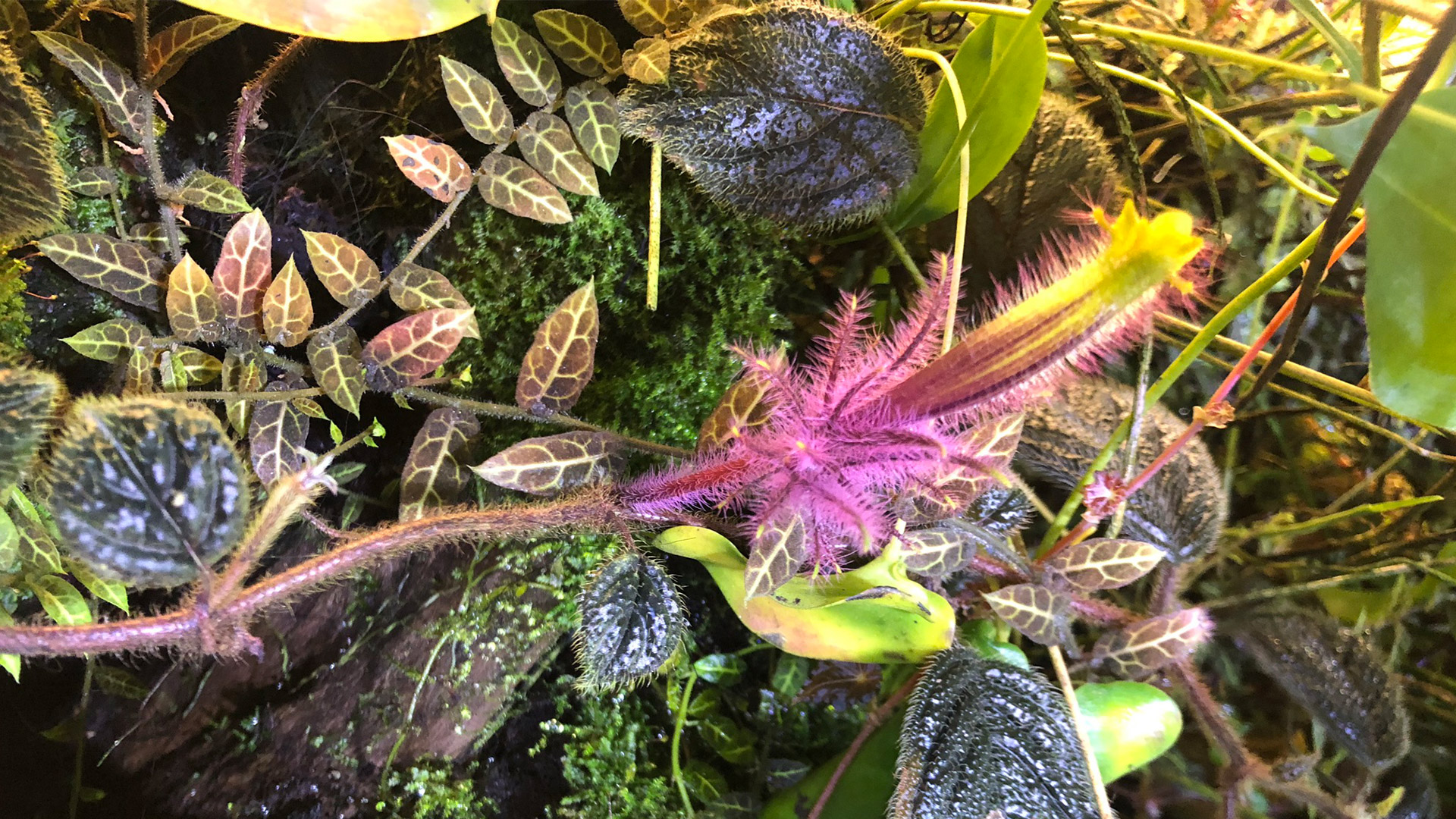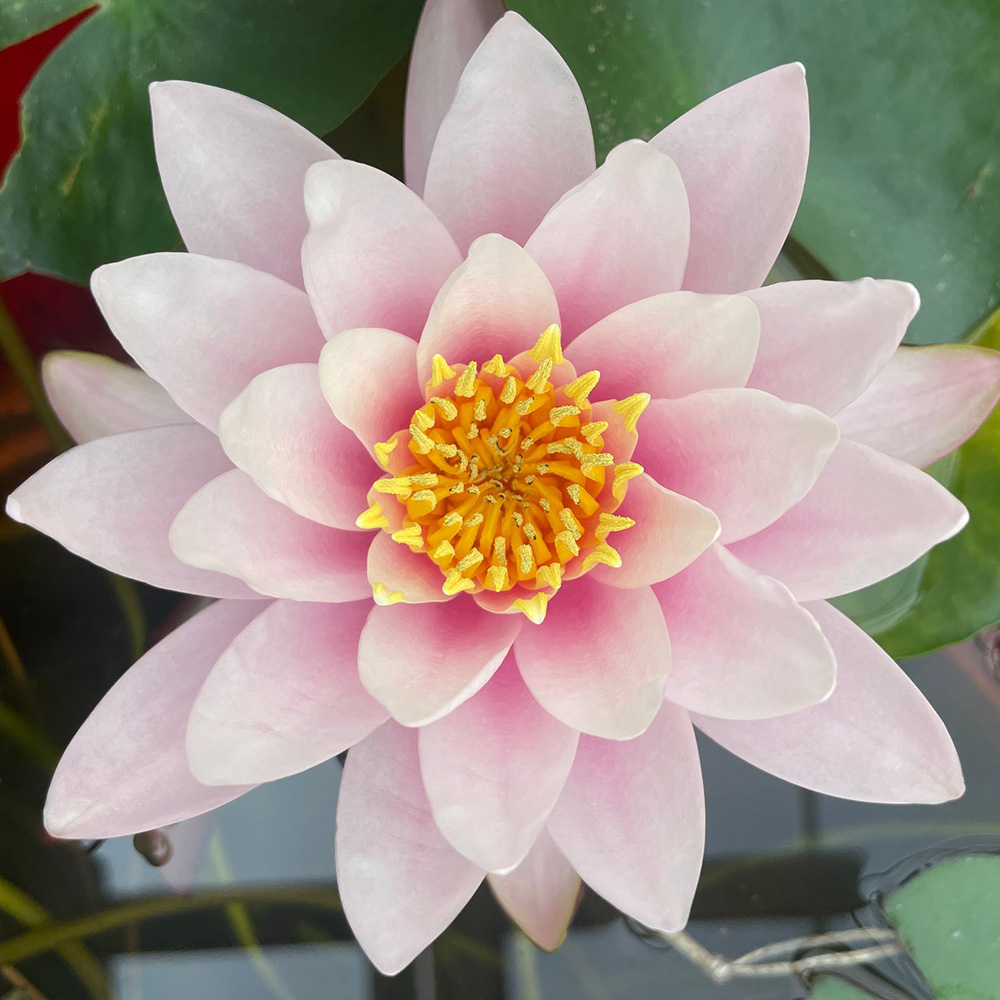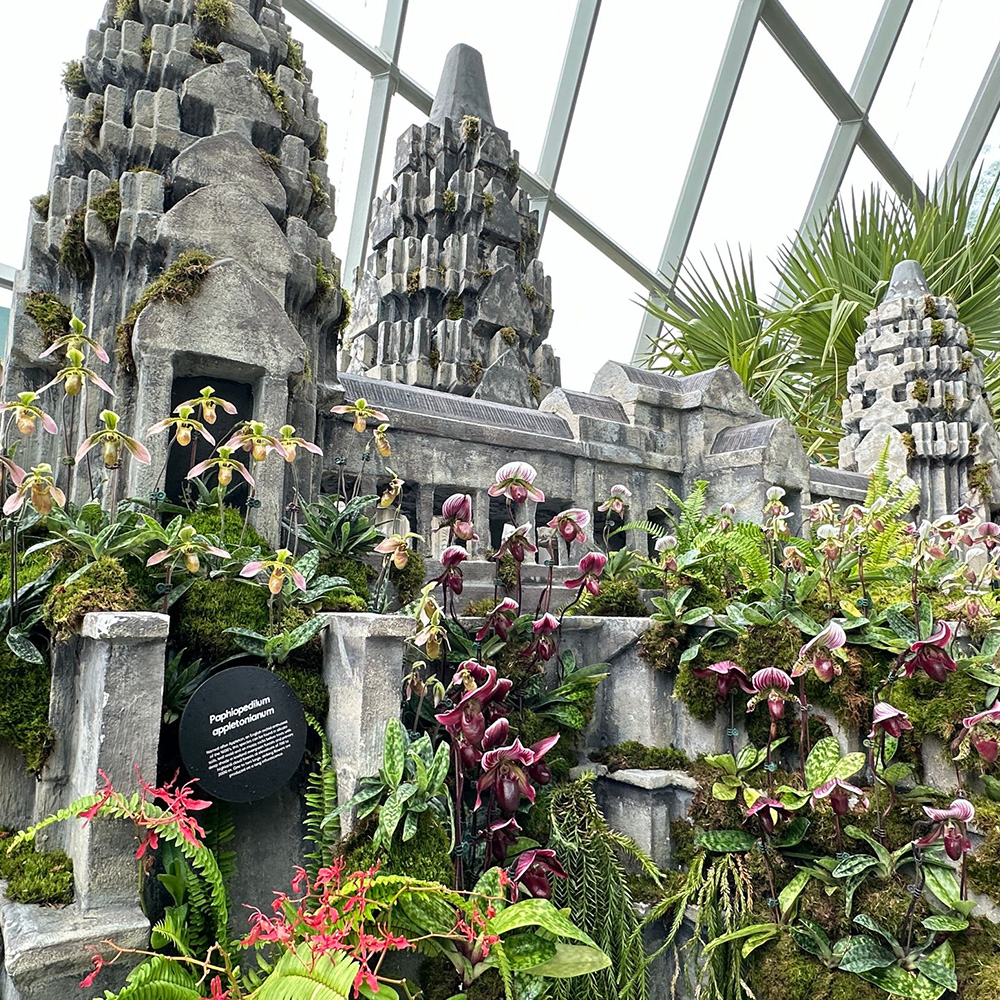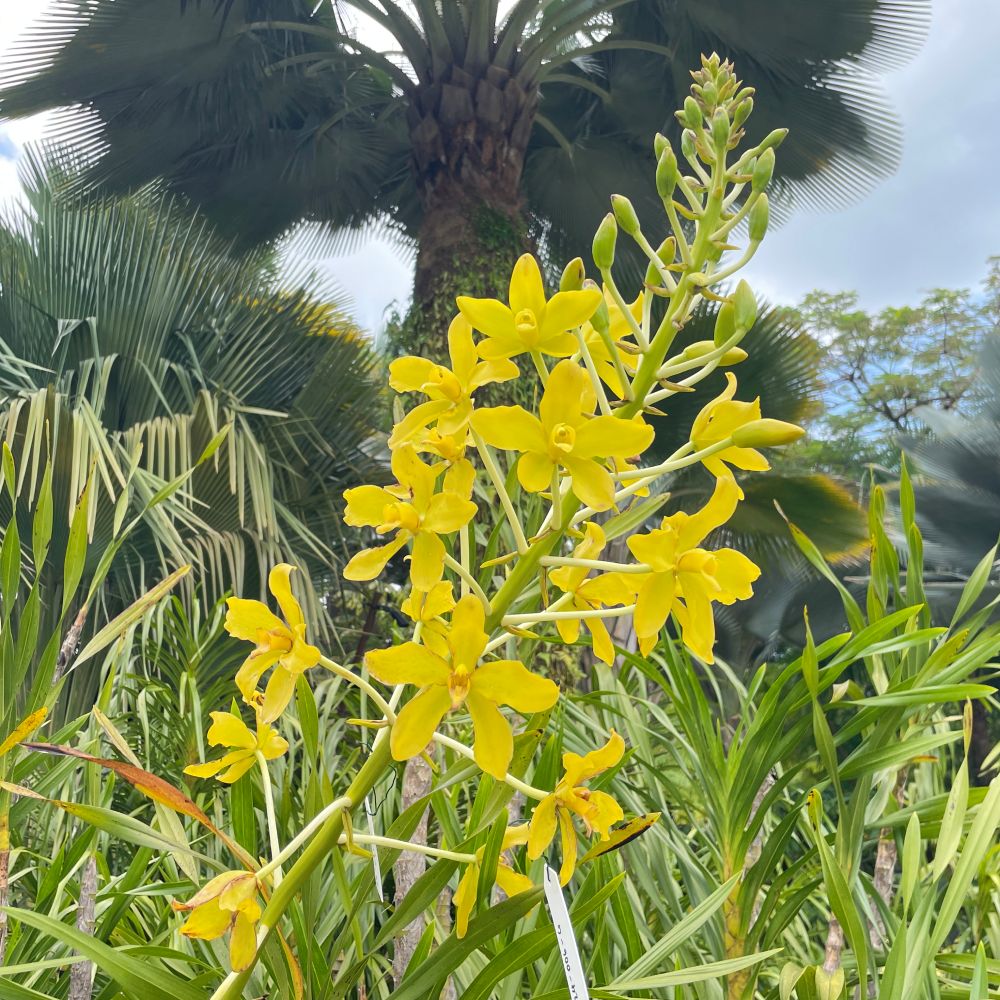Cabbage Tree (Limahlania crenulata)
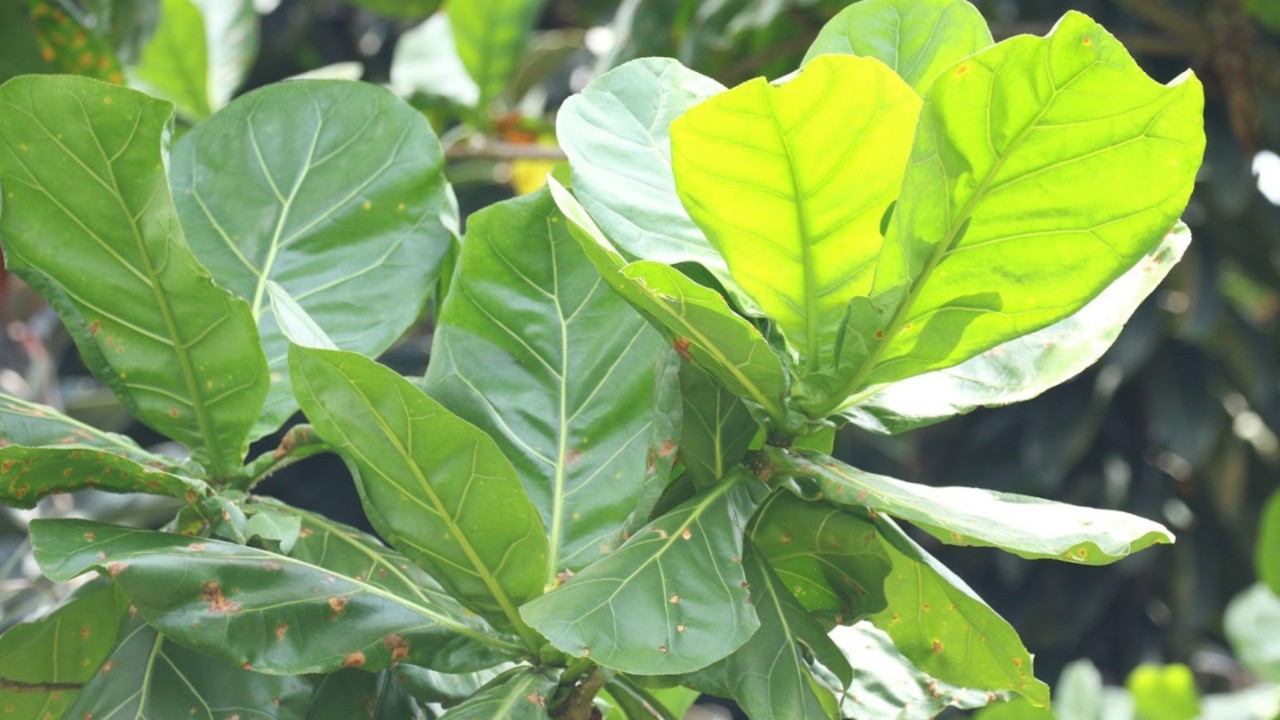
Native to Indo-China, Peninsular Malaysia, Borneo, and Indonesia, but not Singapore, the cabbage tree (Limahlania crenulata) can grow up to 25 meters in height. It has a single, dominant trunk with a whorled primary branching structure, like that of the similar-looking sea almond (Terminalia catappa).
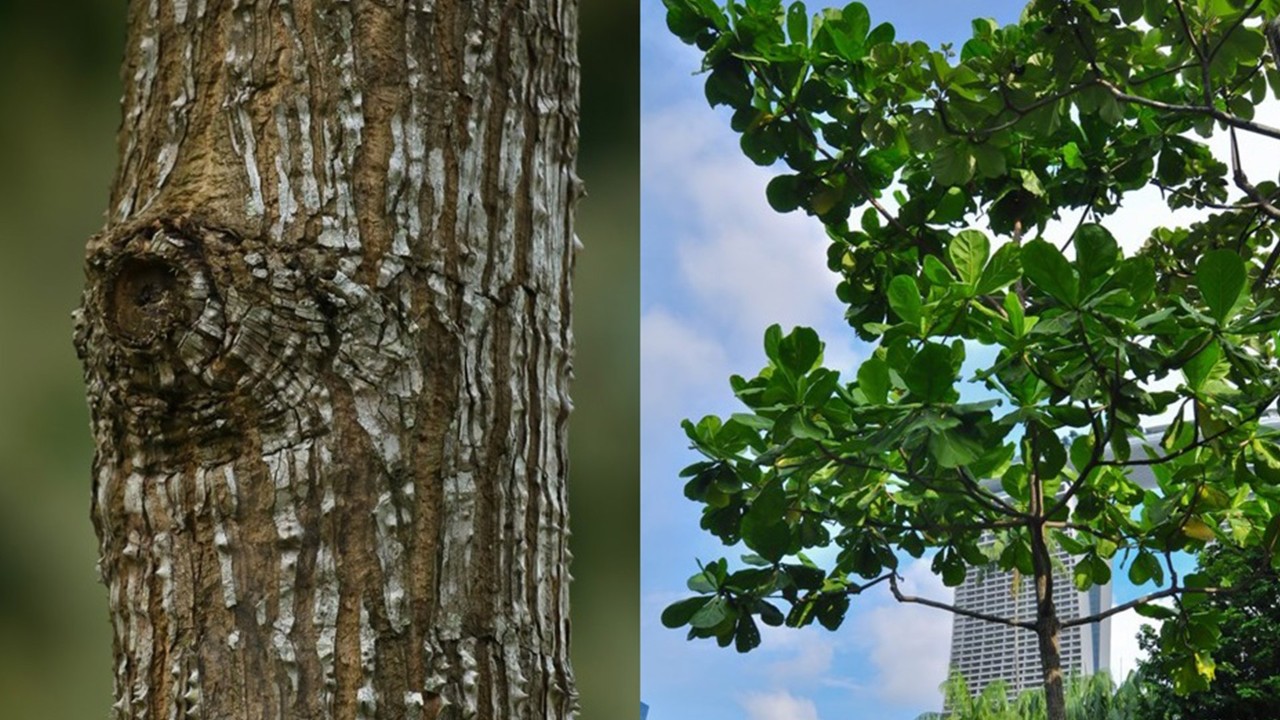 Distinctive trunk (left) and the whorled branching structure of the tree (right), displaying the cabbage-like leaves which give this species its common name.
Distinctive trunk (left) and the whorled branching structure of the tree (right), displaying the cabbage-like leaves which give this species its common name.
The bark is distinctively greyish and deeply fissured, with short prickles that disappear as the tree matures. The leaves are simple, broadly ovate, thick and fleshy with toothed margin with a pair of ear-like appendages at the base of the leaves.
The flowers of this species are borne in clusters. They are fragrant, funnel-shaped with non-protruding stamens and oblong anthers, cream in colour and turning yellow as they age. The fruits are oblong and green, with many small polygonal seeds in each fruit.
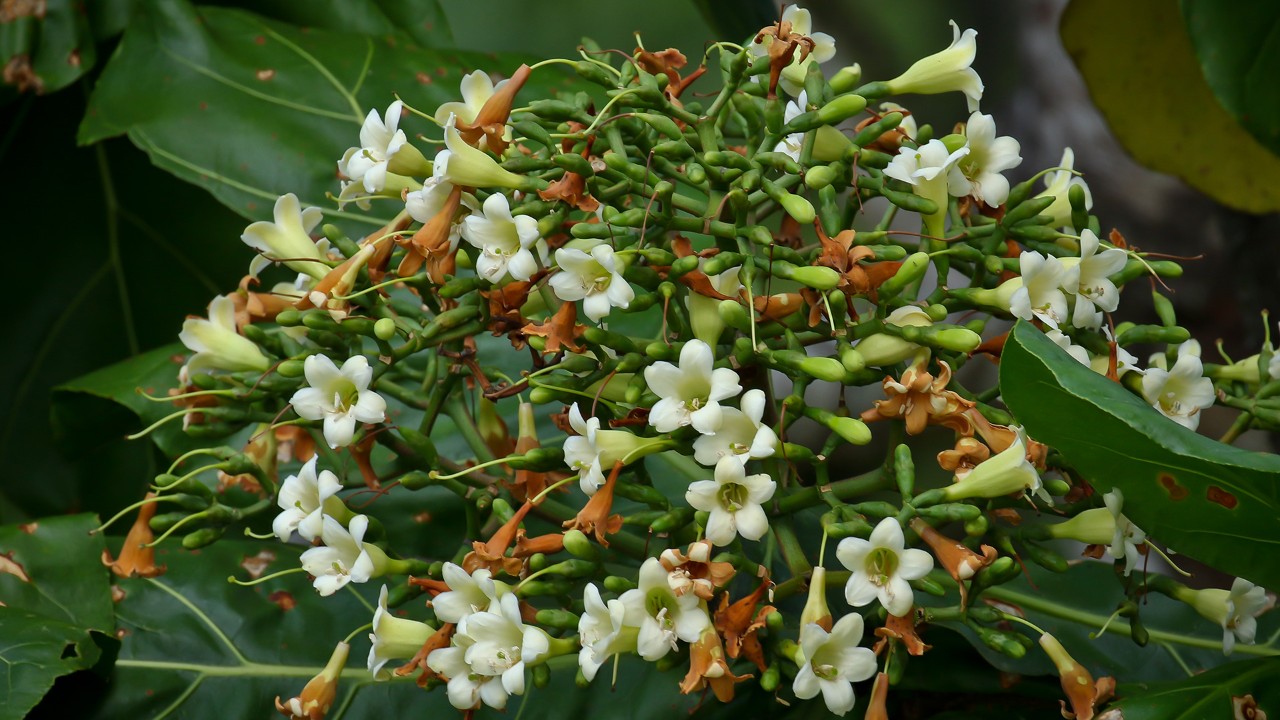 The cream-coloured inflorescence of cabbage tree are highly scented and believed to be pollinated by moths at night.
The cream-coloured inflorescence of cabbage tree are highly scented and believed to be pollinated by moths at night.
A member of the Gentianaceae family which also includes species like our native tembusu tree (Cyrthophyllum fagrans) as its relative. Some of the features of plants in this family are: 4-5 stamens, united flower petals, and opposite leaves.
Previously known as Fagraea crenulata, taxonomists have since distinguished cabbage tree from other Fagraea species, based on distinctive features such as stem bark with prickles that are shed with maturity and serrated leaf margin, hence placing cabbage tree in a new genus.
This new genus was named after Professor Lim Ah Lan, who taught and supervised plant biology students in the University of Malaya. The species epithet crenulata refers to the minutely serrated leaves.
The best place to see the cabbage trees up close is from the bridge between Colonial Garden and Malay Garden, so check them out next time you are visiting!
Written by: Arthur Voo, Senior Research Executive (Research and Horticulture)
Arthur has been working closely with plants for more than 10 years, whether in a park, nature reserve or glasshouse. These days, if he isn’t taking care of plants in the glasshouses, he likes to spend his time hiking and looking for interesting plants in the wild.
